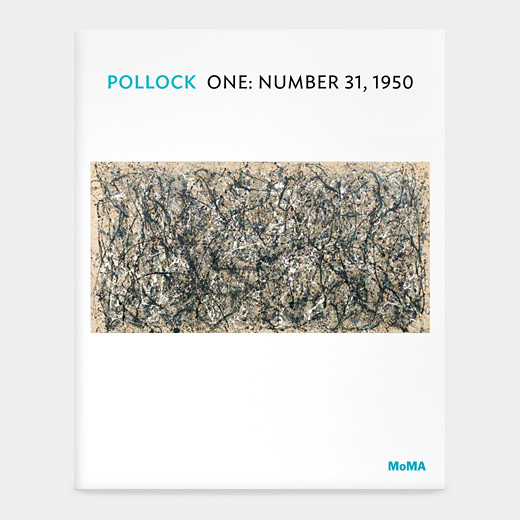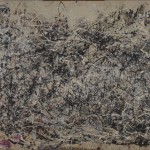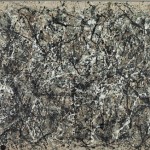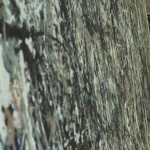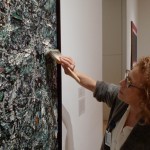UNIQLO has had a long and fruitful relationship with MoMA, and through UNIQLO Free Friday Nights has helped advance the Museum’s mission by making art and design accessible to everyone. To celebrate its continued support of MoMA, this spring UNIQLO unveiled UNIQLO at MoMA, an assortment of T-shirts, tote bags, bandanas, and socks that feature artwork by world-renowned artists, including Andy Warhol, Jean-Michel Basquiat, Keith Haring, Jackson Pollock, and Ryan McGinness.

Posts tagged ‘Jackson Pollock’
Now Available at the MoMA Stores: UNIQLO at MoMA Art-Inspired Accessories
MoMA’s Jackson Pollock Conservation Project: Bringing the Project to Conclusion: Restoration of Number 1A, 1948

Jackson Pollock. Number 1A, 1948. 1948. Oil and enamel paint on canvas, 68” x 8’8.” On view at MoMA in a recent acquisitions exhibition in 1950
Readers who have been following the blog will recognize a pattern in our approach to conservation treatment of Number 1A, 1948, the final of three Jackson Pollock paintings that have been the focus of our 18-month project.
Considering One, Once More
If you’ve been following the Jackson Pollock Conservation Project on Inside/Out, you know that Jackson Pollock’s monumental painting One: Number 31, 1950 underwent some changes in our Department of Conservation this past spring after conservators discovered sections of overpaint on its surface, vestiges of a restoration campaign from the 1960s. You can follow the entire process here.
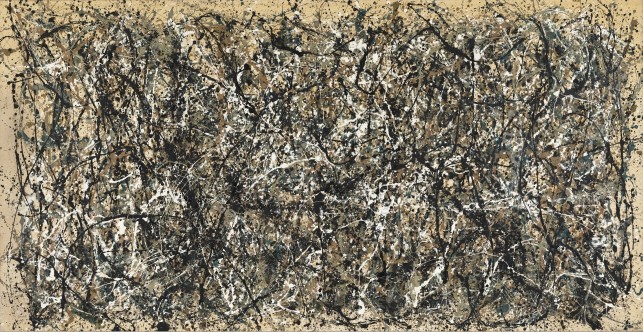
Jackson Pollock. One: Number 31, 1950. The Museum of Modern Art, New York. Sidney and Harriet Janis Collection Fund (by exchange). © 2013 Pollock-Krasner Foundation/Artists Rights Society (ARS), New York
The newest book in our One on One Series, Pollock: One: Number 31, 1950, also examines the history of this specific painting, but in an entirely different way. Author Charles Stuckey’s essay begins its investigation before the painting’s inception and follows it to the present day, considering its legacy and influence, which is visible in numerous contemporary artworks included in the book. In the late 1940s, Pollock began experimenting with a new method of painting, “drip painting” as it came to be known, where he would stand above a vast unframed piece of canvas and render kinetically: flinging, flicking, and, of course, dripping colors onto the canvas with various implements.
Pollock’s method eschewed the conventional notions of painting of the time, opting for raw, unstretched canvas and housepaint over prepared canvas and traditional oils, and darting around the floor of his barn studio rather than working quietly with a palette and easel. One: Number 31, 1950 is a masterful example of this signature style, a monumental work displaying Pollock’s energy and dexterity.
Did you know Jackson Pollock worked as a janitor at the Guggenheim Museum? Or that One: Number 31, 1950 was actually painted after Number 32, 1950 and before Number 30 (now called Autumn Rhythm) and Number 27, 1950?
Drawing from period magazine articles and quotes by Pollock, Lee Krasner, critics, and friends, Stuckey offers a narrative trajectory for the famed painting, following One: Number 31, 1950 from its premiere exhibition, to a stint in an apartment on Central Park West, to its final place in the collection of The Museum of Modern Art.
For more of Stuckey’s essay, download a preview of Pollock: One: Number 31, 1950 from our website.
MoMA’s Jackson Pollock Conservation Project: Number 1A, 1948
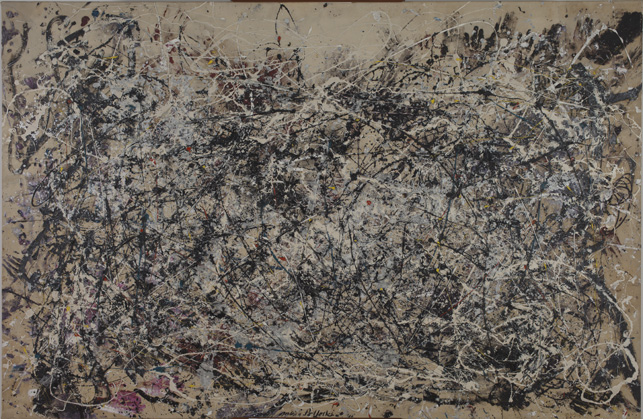
Jackson Pollock. Number 1A, 1948. 1948. Oil and enamel paint on canvas, 68″ x 8’8″. The Museum of Modern Art, New York. Purchase. © 2013 Pollock-Krasner Foundation/Artists Rights Society (ARS), New York
With study and treatment of One: Number 31, 1950 completed and the painting returned to exhibition, we’re moving on to the final painting of the project: Number 1A, 1948.
MoMA’s Jackson Pollock Conservation Project: Wrapping Up Treatment of One: Number 31, 1950
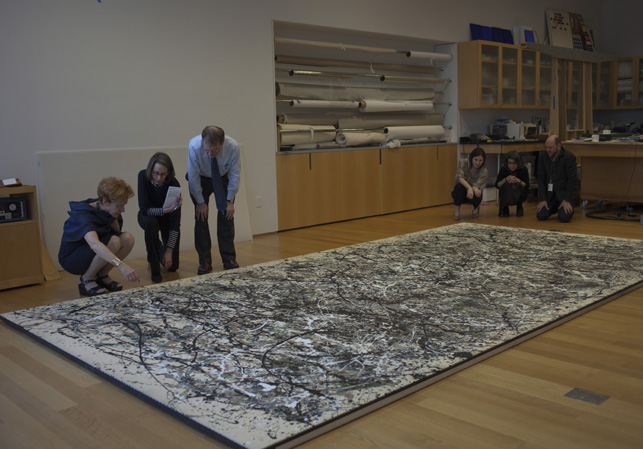
A meeting between conservators and curators to view One: Number 31, 1950 as Pollock would have during its creation: laid horizontally
Throughout the project, we’ve been working closely with curators in MoMA’s Department of Painting and Sculpture, and this exchange of ideas surrounding Pollock has enriched and informed the treatment process. During one such meeting, we took advantage of the opportunity to view One: Number 31,1950 as Pollock saw it during its inception: laid horizontally.
MoMA’s Pollock Conservation Project: Video Update on One: Number 31, 1950
Over the past nine months, Inside/Out readers have been following MoMA’s Jackson Pollock Conservation Project, the study and restoration of three iconic Pollock paintings in the Museum’s collection.
MoMA’s Jackson Pollock Conservation Project: Insight into the Artist’s Process
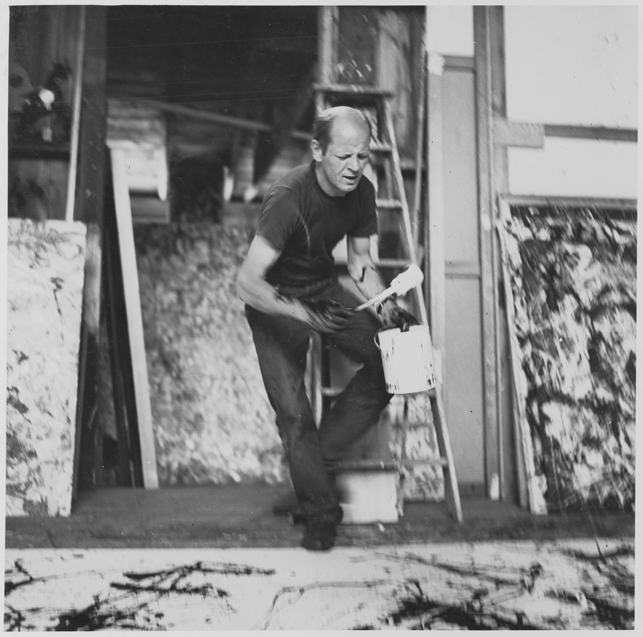
Jackson Pollock at work in his studio, 1950. Photo: Hans Namuth
In the May 1951 issue of ARTnews a selection of photographs by Hans Namuth appeared as illustrations for Robert Goodnough’s article, “Pollock Paints a Picture.” The images depict a focused Pollock energetically applying paint to a large canvas spread across his studio floor.
MoMA’s Jackson Pollock Conservation Project: One: Number 31, 1950—Characterizing the Paint Surface Part 2
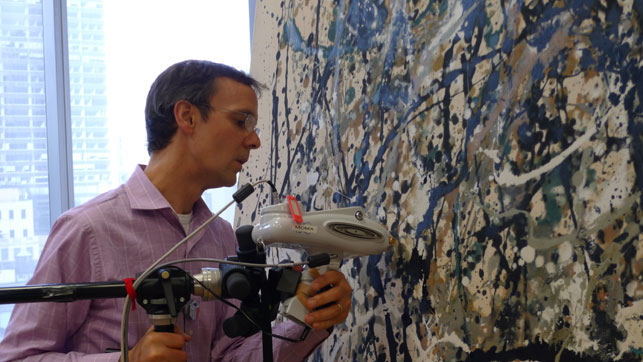
Conservation scientist Chris McGlinchey conducts elemental analysis using a handheld X-ray Fluorescence (XRF) analyzer
Empirical examination and scientific analysis are fundamental to conservation research and treatment; conservators frequently collaborate with scientists in order to clarify specific questions: to identify materials, elucidate degradation mechanisms, or test the efficacy of conservation methods.
MoMA’s Jackson Pollock Conservation Project: One: Number 31, 1950—Characterizing the Paint Surface Part 1
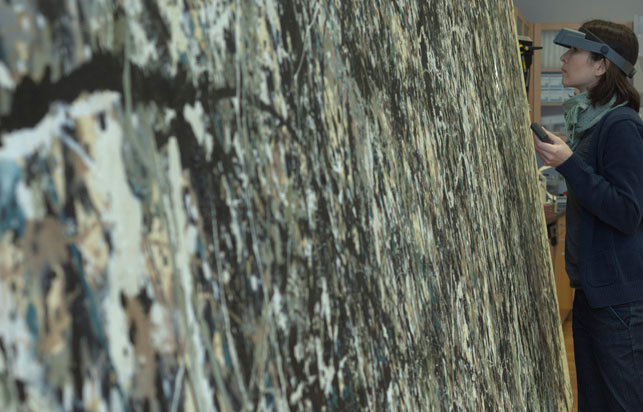
MoMA Assistant Conservator Jennifer Hickey inspects the paint surface of One: Number 31, 1950 under magnification
In our last post, we took a closer look at the variety of visual effects Pollock was able to achieve with his painting technique. We also observed some passages of paint that don’t appear to fit the typical characteristics of poured house paint. So we set out to investigate this seeming inconsistency.
MoMA’s Jackson Pollock Conservation Project: Looking Closely at One: Number 31, 1950
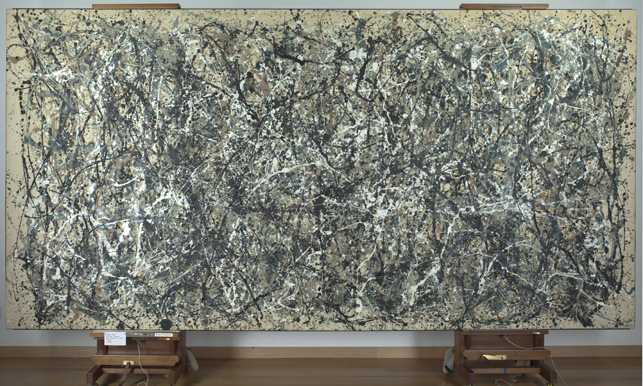
One: Number 31, 1950 before treatment
It’s a good time to be studying and working on Jackson Pollock’s paintings. With projects also underway at the Seattle Art Museum and The J. Paul Getty Museum
If you are interested in reproducing images from The Museum of Modern Art web site, please visit the Image Permissions page (www.moma.org/permissions). For additional information about using content from MoMA.org, please visit About this Site (www.moma.org/site).
© Copyright 2016 The Museum of Modern Art




